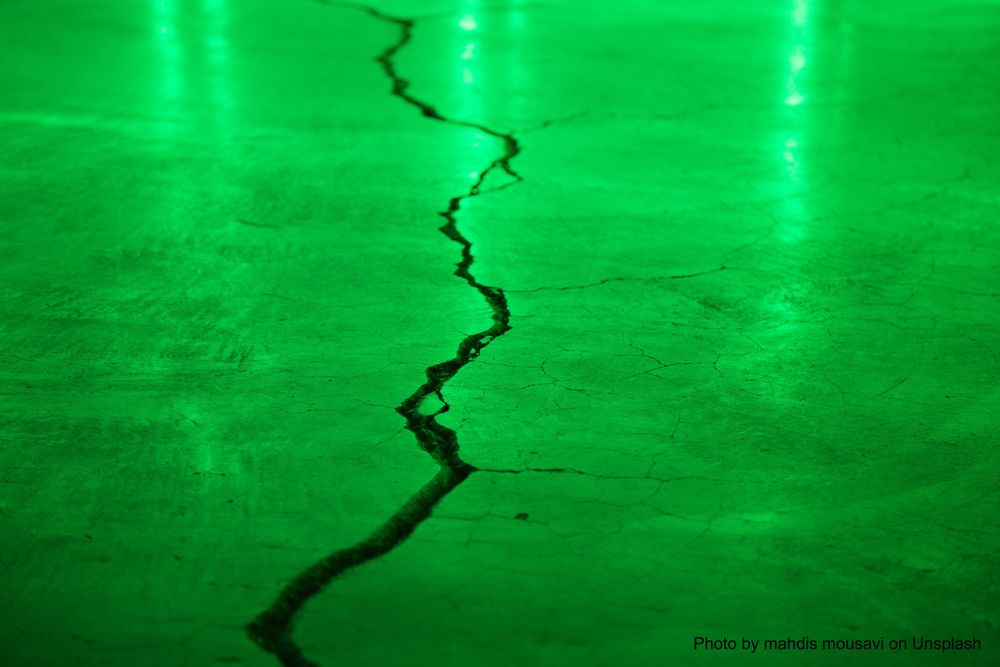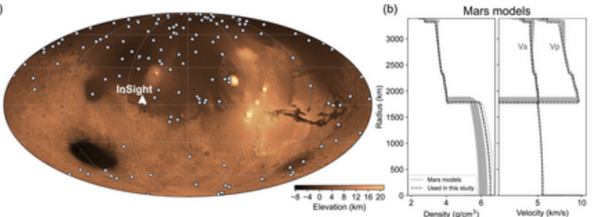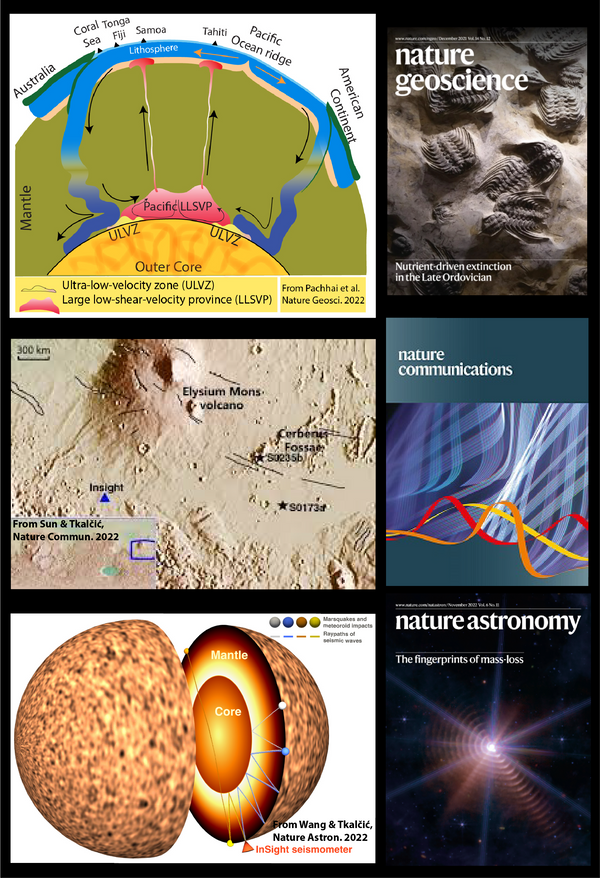A tight squeeze between tectonic plates
The largest earthquakes occur at subduction zones, where one plate descends beneath another into the underlying mantle, at a convergent plate boundary. Some subduction zones seem to host more large earthquakes than others (Fig. 1), potentially reflecting the influence of large-scale geodynamic processes, which vary from one subduction zone to the next. The plate interface stress state influences whether earthquakes quickly arrest or grow to large magnitudes, but it is unclear how it varies between regions. Our research, involving collaboration between Cardiff University, Université de Montpellier and the Australian National University, explores how shear stress at the plate interface is likely to vary between subduction zones and which dynamics influence it at the whole-margin and million-year scales.

Subduction zones are highly variable in their dynamics. Modelling, both in the laboratory and using computational tools, has revealed how such dynamics can be related to the forces driving mantle convection. For example, the overriding plate is rifting apart at the Marianas subduction zone, while the Andean mountains have formed along the South American margin. This has been related to mantle flow below the overriding plate, which influences the traction driving plates together (e.g. Schellart and Moresi, 2013). Some subduction trenches retreat backwards towards the ocean as subduction evolves, whereas others stay stationary or even advance. This depends on the density of the slab and the variation of slab buoyancy along the margin (Capitanio et al., 2010), amongst other things. As slabs subduct, their morphology can vary between sinking sub-vertically, folding and stagnating at the lower mantle, or even tearing apart, depending on retreat velocity and slab strength (Garel et al., 2014).

While subduction zone dynamics are clearly associated with varying stresses in the overriding plate, it is unclear how the stress at the plate interface varies, as it is not typically analysed and can be difficult to precisely resolve. Davies et al. (2011) developed the finite-element, control-volume, computational modelling framework Fluidity, for simulating mantle and lithosphere dynamics, incorporating a method of efficient adaptive meshing that allows regions of dynamical significance, such as the plate interface, to be well resolved. Garel et al. (2014) used Fluidity to model subduction dynamics across a wide parameter-space, incorporating the plate interface as a weak visco-plastic layer (Fig. 2) and reproducing a range of trench retreat velocities with contrasting slab morphologies. In our study, we analysed the stress state within this plate interface layer and explored how it is linked to mantle dynamics.
We found that shear stress at depths of 10-50 km, relevant for the seismogenic zone, was at its highest when the trench was relatively stationary (for example, in cases when young sea-floor was subducted; Fig. 3). In contrast, the models with rapidly retreating trenches (associated, for example, with subduction of older sea-floor) tended to have lower interface shear stress. Variations in interface stress were also related to the forces acting on the slab, where high interface stress was linked with increased slab pull and a reduction in the torque applied to unbend the slab. Low interface stress was associated with slab compression and a high torque unbending the slab.
These variations of plate interface stress are reconcilable with the current understanding of mantle forces. Most of the slab’s gravitational energy is dissipated in driving mantle flow during trench retreat (Schellart, 2004). While older sea-floor is denser, providing a higher driving force, this is counteracted by its tendency to retreat, such that the slab bends away from the overriding plate and the mantle more efficiently resists the sinking of the slab, reducing the slab pull. As such, the lowest plate interface stress is expected where subduction of old sea-floor drives trench retreat.
The Tonga-Kermadec margin (bottom centre Fig. 1) is an example of an old slab rapidly retreating. Focal mechanisms of intra-slab earthquakes indicate the slab is efficiently unbending as it enters the mantle. Our results suggest this could be a margin with anomalously low plate interface shear stress, despite rapid convergence (>10 cm/yr). It is also considered to have relatively low seismic coupling. Such links will be explored in future modelling and data compilations.

The plate interface shear stress varied by up to a factor of 2 between models with contrasting subduction dynamics. This may not sound like much, but similar variations have been associated with a range of rupture sizes in numerical models (Fang and Dunham, 2013) and changing earthquake statistics with depth (Spada et al., 2013). This stress variation is also likely to be greater when considering complex 3-D subduction processes, such as collision of buoyant sea-floor (Moresi et al., 2014). Linking tectonic stress, effective at millions of years time-scales, to fault stress states which vary over seconds to years, remains challenging. Geodynamic models incorporating the earthquake cycle are helping constrain how these scales interact (van Dinther et al., 2013).
Plate interface stress can vary significantly between subduction zones at the whole-margin and million-year scale, depending systematically on slab-mantle dynamics. Deformation at the plate interface may therefore be sensitive to large-scale geodynamics, in addition to fault-scale geological processes.

Acknowledgments: The models analysed in this research were originally developed by Fanny Garel and co-authors of Garel et al. (2014).
References:
Capitanio, F. A., Stegman, D. R., Moresi, L. N., & Sharples, W. (2010). Upper plate controls on deep subduction, trench migrations and deformations at convergent margins. Tectonophysics, 483(1-2), 80-92.
Davies, D. R., Wilson, C. R., & Kramer, S. C. (2011). Fluidity: A fully unstructured anisotropic adaptive mesh computational modeling framework for geodynamics. Geochemistry, Geophysics, Geosystems, 12(6).
Garel, F., Goes, S., Davies, D. R., Davies, J. H., Kramer, S. C., & Wilson, C. R. (2014). Interaction of subducted slabs with the mantle transition‐zone: A regime diagram from 2‐D thermo‐mechanical models with a mobile trench and an overriding plate. Geochemistry, Geophysics, Geosystems, 15(5), 1739-1765.
Moresi, L., Betts, P. G., Miller, M. S., & Cayley, R. A. (2014). Dynamics of continental accretion. Nature, 508(7495), 245-248.
Müller, R. D., Seton, M., Zahirovic, S., Williams, S. E., Matthews, K. J., Wright, N. M., ... & Cannon, J. (2016). Ocean basin evolution and global-scale plate reorganization events since Pangea breakup. Annual Review of Earth and Planetary Sciences, 44, 107-138.
Schellart, W. P. (2004). Quantifying the net slab pull force as a driving mechanism for plate tectonics. Geophysical research letters, 31(7).
Schellart, W. P., & Moresi, L. (2013). A new driving mechanism for backarc extension and backarc shortening through slab sinking induced toroidal and poloidal mantle flow: Results from dynamic subduction models with an overriding plate. Journal of Geophysical Research: Solid Earth, 118(6), 3221-3248.
Spada, M., Tormann, T., Wiemer, S., & Enescu, B. (2013). Generic dependence of the frequency‐size distribution of earthquakes on depth and its relation to the strength profile of the crust. Geophysical research letters, 40(4), 709-714.
Van Dinther, Y., Gerya, T. V., Dalguer, L. A., Mai, P. M., Morra, G., & Giardini, D. (2013). The seismic cycle at subduction thrusts: Insights from seismo‐thermo‐mechanical models. Journal of Geophysical Research: Solid Earth, 118(12), 6183-6202.
van Rijsingen, E., Lallemand, S., Peyret, M., Arcay, D., Heuret, A., Funiciello, F., & Corbi, F. (2018). How subduction interface roughness influences the occurrence of large interplate earthquakes. Geochemistry, Geophysics, Geosystems, 19(8), 2342-2370



